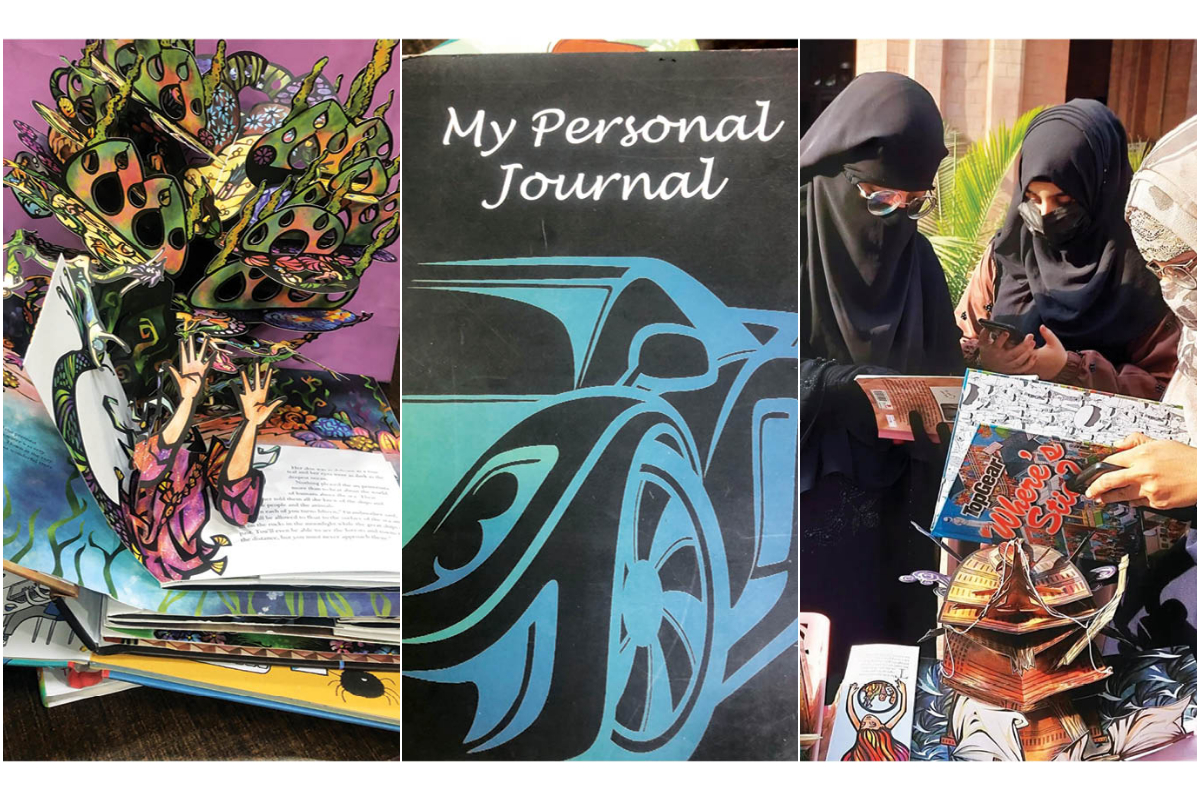Books that talk
-
18th Dec, 2022. 09:12 am

Books that talk
Interactive books are expensive yet effective in storytelling
LAHORE: A book used to be a matter of an attractive title page, interesting content, and engaging pictures and illustrations, if required.
Now, the authors are giving power to their content by adding features to their books, such as pop-ups, sounds, touch-and-feel objects, and pull tabs to make their books powerful tools.
“Interactive books have adopted the role of Naani Ama, as they tell stories to kids,” said Farwa Batool, a secondary school teacher. Her three-year-old son, Waris Khan, received a talking book on his sixth birthday from a family member.
“What a wonderful gift it is. The book not only familiarises the kid with the text but also helps them learn their pronunciation. The reading experience has become wonderful, thanks to the animated sounds, motions, and unique effects the book produces. ”
Recently, at a book fair at the Government College University in Lahore, a stall selling interactive books for children attracted a rush of adult visitors. Dr Saima Shaban was the vendor.
“I love selling interactive books because they increase the cognitive skills of children, and make them book lovers in the age of digital gadgets,” she said. She started her venture during the days of Covid-19 lockdowns, and since then she has been trying to reach out to schools and the general public through online and in-person exhibitions at different venues.
“What makes interactive books special is that children get reading as well as visualisation experiences. They can listen to the text; they can touch and feel the objects.”
She proudly showcases a book that has a set of activities. At the end of the activity, there are lines, where a reader is allowed to write their reflection with a soft marker. “The paper allows the reader to write and then wipe the text with tissue paper, making room for another reflection. The practice keeps the child coming up with critical thinking every time. That’s what the real purpose of reading is.”
A few bookstores in upscale localities are selling pop-up books. Readings, a famous book house in the Defence area, has put on display such artistic publications. As soon as the reader opens a page, a three-dimensional paper production pop-ups. Paper engineering does not involve scissors or glue to make a presentation of a model. Instead, only artistic folding is applied on flexible paper to make the creative treat.
“By and by, people are turning to interactive books,” said a salesperson behind the counter.
Dr Shaban also vouches for the fact that interactive books are becoming a rage among children.
“I have completed library projects with several schools of the city, under which I arranged books, including interactive books, to improve reading habits among children,” she says.
Teacher trainer Syed Shamim Azam has divergent views on such books. “Interactive books should be made available in school libraries, as the idea that every child must pick a book is a commendable attempt to encourage pupils to read,” he says.
“There should be efforts to turn children towards books as technology, reading smart phones have sadly destroyed children’s reading habits. The development of students’ interests in hardcover books may be enhanced by interactive books, however, teaching pupils discourse is more crucial for improvement in both oral and written communication.”
Improving reading comprehension among schoolchildren is a big challenge for schools and parents. According to a school assessment report by the Idara-e-Taleem-o-Agahi released in March this year, 45 per cent of students are unable to read a sentence in Urdu and their regional languages and 44 per cent are unable to read sentences in English.
Dr Shaban says this mostly happens due to untrained teachers and the unavailability of books in native languages. Do we have a sufficient collection of children’s literature in Urdu, and local languages?
She smiles and says that luckily a good number of books are available in Urdu and local languages that offer good-quality content powered by eye-catching illustrations and pictorial presentations. These books have local characters which help the readers pick up the concepts without any struggle.
“The only problem is that people are not ready to pay for books,” she said. She says the only way to improve reading habits among children is to allow them to read what they want to read.
“Recently, at a book fair at Jilani Park, a kid wanted to buy a science fiction book, where his parents wanted him to pick another one. I offered the parents to pay me Rs400, the price of the book, and pick the book of the kid’s choice. Once he has read it, you may return the book and collects your money.”
The happy deal left the boy exalted and Dr Shaban satisfied. Luckily, she is being helped to pursue her mission by the Women Resource Centre and Incubators, a government-assisted facility that mentors and trains start-ups. Sadly, interactive books come at a cost.
“That’s a bitter truth that interactive books are costly. Look, this pop-up book is Rs3,500. That’s why I say such books are mostly for gifts. A good gift, indeed.” Another reason she cites for the lack of reading abilities among children is schools’ misuse of libraries and library periods. She says schools must have a library period every day, and a trained librarian should man the library premises.
“An untrained, boring librarian would keep all books untouched till the end of every year.”
Catch all the Business News, Breaking News Event and Latest News Updates on The BOL News
Download The BOL News App to get the Daily News Update & Live News.